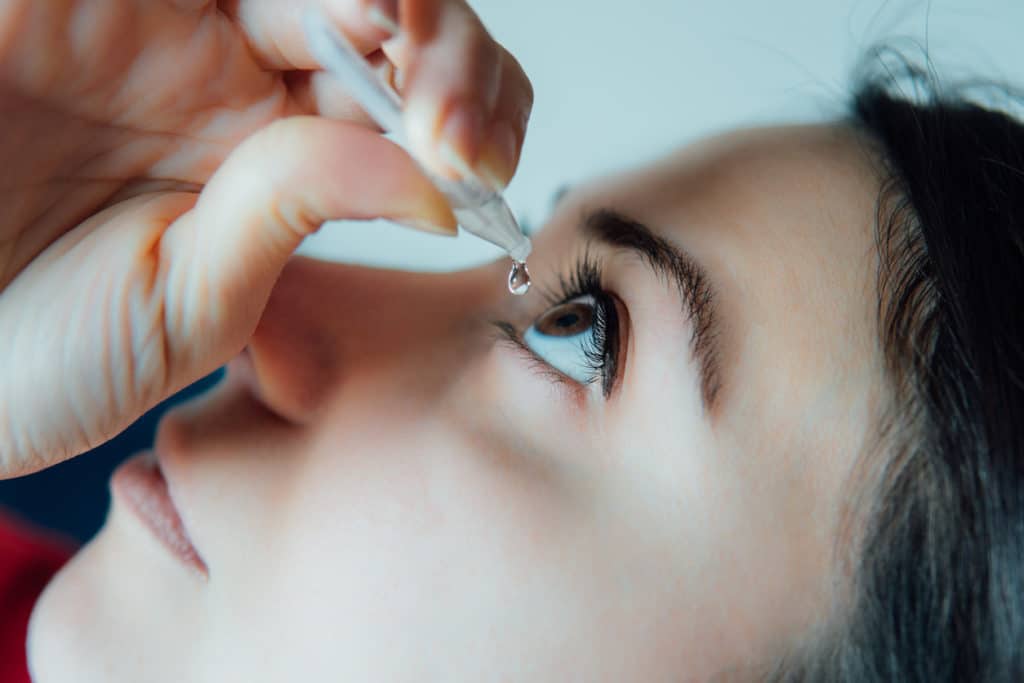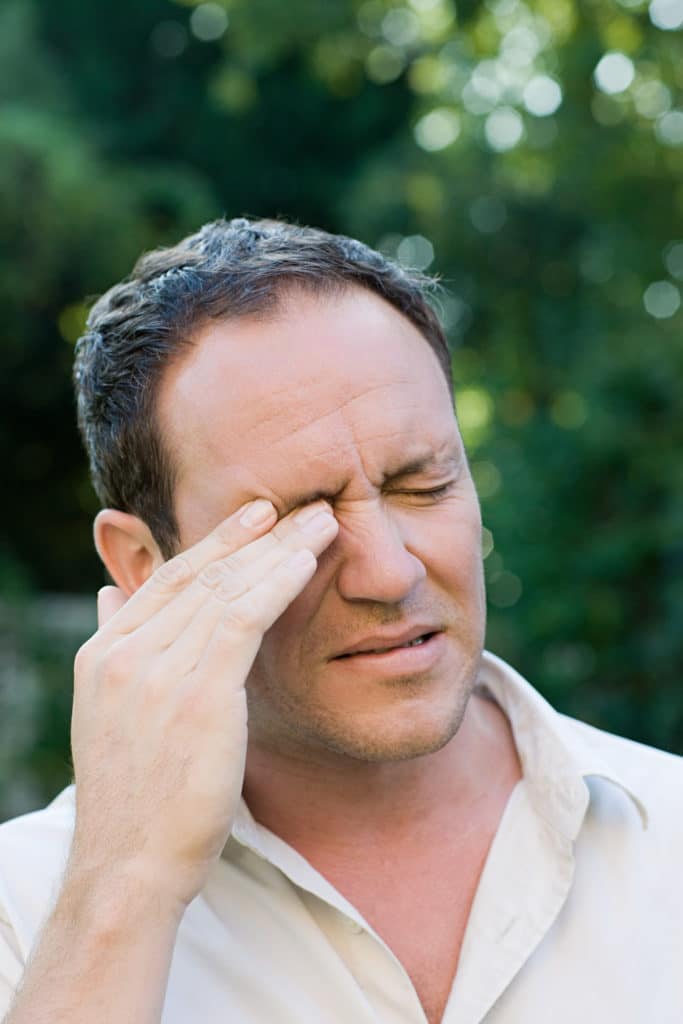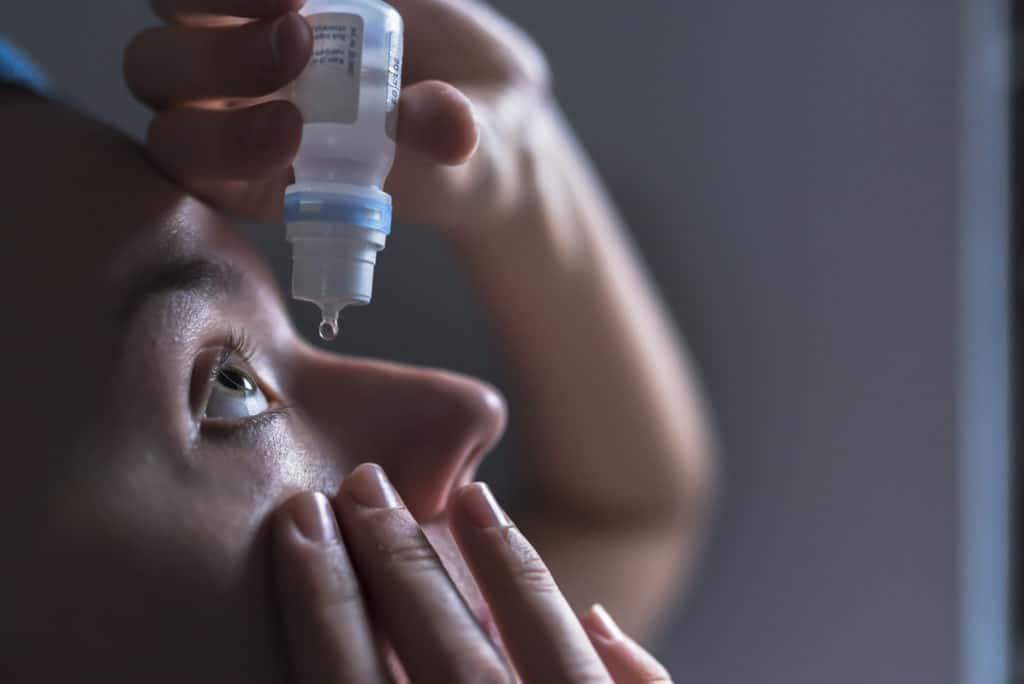Dry Eye Treatment
in Jacksonville FL
What is Dry Eye?
Dry eye is a very common condition in with the eyes are not sufficiently lubricated. This leads to itching, redness, and pain. Eyes can become dry if the tear ducts are not producing enough tears or if there is a chemical imbalance in the tears. It is important to alleviate the symptoms of dry eye. If untreated, dry eyes have the potential to damage vision. Dry eye can be diagnosed after a comprehensive eye exam at Jacksonville Eye Center.
Dry Eye Symptoms
Dry eye related discomfort is one of the most frequent complaints heard by eye doctors. The symptoms of dry eyes are varied and the list below is by no means all-inclusive, however, patients that suffer from dry eyes usually experience a number of the following symptoms.
- Dryness
- Redness
- Scratchiness
- Blurred Vision
- Foreign body sensation
- Burning sensation
- Sandy/gritty sensation
What Causes Dry Eye Syndrome?
Dry eye syndrome often referred to as keratitis sicca or keratoconjunctivitis sicca, is caused by insufficient and/or poor-quality tears. There are three main components of human tears. Most human tears are produced by the lacrimal gland. The oily component of tears is produced by the meibomian glands and the third component, the goblet cells, keeps all of the components mixed up. When one of the parts of this mixture becomes unbalanced, dry eye syndrome can occur. There are numerous reasons as to why these glands may not be doing their part.
Insufficient tear production and/or poor tear quality are the most common causes of dry eye syndrome. Inflammation of the lacrimal gland is the most common cause of insufficient tear volume. Meibomian gland dysfunction, inflammation of the glands at the eyelid margin, contributes to poor tear quality. Medications can also cause ocular dryness. Hormonal changes also contribute to insufficient and poor quality tears.
What Our Patients Say
“Dr. Schnipper and his entire staff are a most courteous and professional group of people. You are always greeted with a smile and knowledgeable answer to any questions you may have. I travel from out of state because to me they are the best around! He has been my opthomologist for 20 plus years and I highly recommend him for any and all of your vision needs!” – Erma B.
“Dr. Schnipper and staff were very professional and went above and beyond what you would normally expect…considering that I was not the most cooperative patient…he did an excellent job. He is the best of the best….5 Stars” – Richard W.
How is dry eye syndrome diagnosed?
A doctor performs a comprehensive eye examination to identify reasons for various eye conditions, including dry eyes. In addition to the eye exam, the doctor will conduct a consultation and may perform specific tests.
- Patient history is a starting point for understanding eye symptoms. The doctor will ask about environmental factors, health factors, and medications the patient is taking.
- The external eye exam observes lid structure and blinking.
- A light may be used to closely observe the eyelids and cornea for signs of inflammation and abrasions.
- A special test may be performed to measure tear quantity and quality.
DRY EYE Treatment Options
There are many treatment options for dry eye syndrome. When you have your comprehensive eye exam at Jacksonville Eye Center, either Dr. Schnipper or Dr. Hoffman will guide you in choosing the best treatment option for your condition.
Artificial Tears
Artificial tears containing active ingredients such as carboxymethylcellulose, hydroxypropyl methylcellulose, glycerin, castor oil, polyethylene glycol or polyvinyl alcohol are used in mild cases of dry eyes. Not all artificial tear brands work the same or work in all patients. More severe cases require additional treatment. If you find yourself using your artificial tears three or more times a day you should use a preservative-free tear. Most patients find that artificial tears do help, however, the effect is only temporary, lasting only 10-15 minutes. Most of these patients will experience significant relief with punctual occlusion.
Punctal Occlusion
The puncta is the small opening found on the edge of the upper and lower eyelids next to the nose. Tears drain out of the eye through the puncta into the nose, this is why your nose runs when you cry. If you aren’t producing enough tears then you don’t want the tears that you are producing to be drained away. Punctal occlusion is a painless treatment option that is performed in the office, taking only a couple of minutes.
The MiBoFlo Thermoflo®
The MiBoFlo Thermoflo® is a therapeutic device providing an alternative therapy for dry eyes. It uses a proprietary thermoelectric heat pump to help maximize liquefaction of meibum, thus improving the preservation and function of the evaporative component of the tear film. This therapy is aimed at improving the function of the meibomian component of the tear film.
The Thermo control operates within a plus or minus 3% variance to maintain an effective treatment temperature of 108 degrees. The MiBoFlo has an adjustable timer allowing for the versatility to treat various levels of dry eye.
The MiBoFlo device is constructed from quality components and manufactured in the U.S.
RED LIGHT THERAPY
Red light therapy is unique, alternative therapy approach to treating dry eyes. It works by targeting the meibomian gland secretions in those who suffer from Meibomian Gland Dysfunction, or MGD.
What to do after your dry eye syndrome treatment?

When will I notice the results of my treatment?
Many patients feel better right away after dry eye treatment. Depending on the approach, results may be immediate and shorter-lived (eye drops) or may improve gradually and last longer (punctual occlusion or MiBoFlo Thermoflo®). When your doctor develops the right dry eye treatment for your needs, they will inform you regarding what to expect in terms of short and long-term results.
How often will I need dry eye treatments?
The results of dry eye treatments can last up to several months. Depending on the severity of dry eye syndrome and the effectiveness of artificial tears, patients may repeat medical treatments as needed to manage comfort.
Which treatment is right for me?
Studies indicate that artificial tears can work for many people with mild dry eye syndrome, especially when used concurrently with healthy dietary habits or supplementation. If medical-grade artificial tears do not achieve satisfactory results, your doctor will recommend one or more treatment options after conducting a comprehensive consultation and eye exam. Both punctual occlusion and MiBoFlo Thermoflo have demonstrated safety and efficacy in the treatment of dry eye.
Can dry eyes cause blindness?
Dry eye disease can cause persistent eye irritation and sensitivity that diminishes eyesight temporarily. Untreated dry eye disease carries a risk of chronic eye infection and corneal damage such as abrasions, as well. While it is best to avoid these complications, it is unlikely that dry eye disease would cause blindness.
Can my diet affect my dry eye symptoms?
A healthy diet supports all biological functions and is vital to all systems and organs, including the eyes. People with dry eye symptoms may want to make sure they are eating or supplementing the following:
- Omega-3 fatty acids provide balance with omega-6 fatty acids to regulate inflammation. Foods like fresh tuna, salmon, and sardines contain this nutrient, as do leafy greens and nuts and seeds like flaxseed.
- Lutein and zeaxanthin are nutrients that support the cellular function in the eyes. They can be found in broccoli, kale, spinach, and collards. Eye health supplements may also contain these nutrients.
- Vitamin C, an important antioxidant, supports healthy blood vessels. This may be taken as a supplement or consumed in orange juice, citrus fruits, cooked spinach, and tomatoes.
- Zinc is involved in transporting vitamin A from the liver to the retina, where it supports eye health. Zinc can be found in eggs, milk, beef, and several other foods. Supplementation may also be beneficial.
Can diet resolve dry eye disease? Probably not. However, a nutrient-rich diet can reduce the risks associated with this and other eye conditions.
Risks related to dry eye syndrome
Dry eye syndrome can cause persistent blurriness, redness, discomfort, and tearing. These symptoms can be severe at times and may inhibit a person from reading, working on their computer, and driving. Treating dry eyes holds significant benefits for individuals wanting to support the highest quality of life.
Schedule a Consultation
If you suffer from dry eye and would like to learn more about your treatment options, contact Jacksonville Eye Center. Call our office today at 904-355-5555 to schedule a consultation. Our practice serves Jacksonville, Florida, and surrounding areas.




